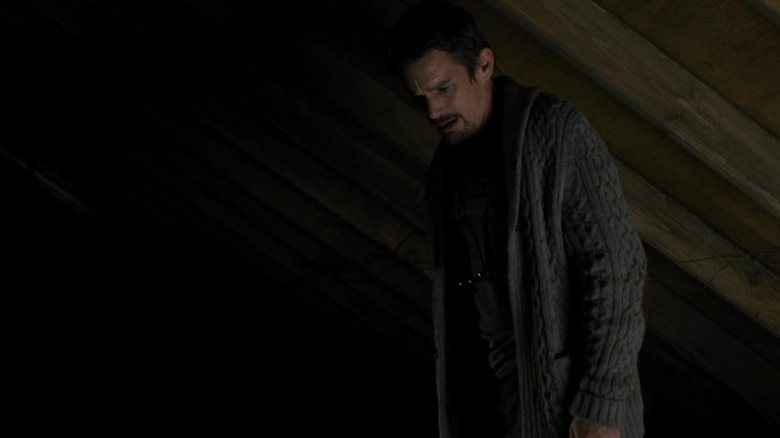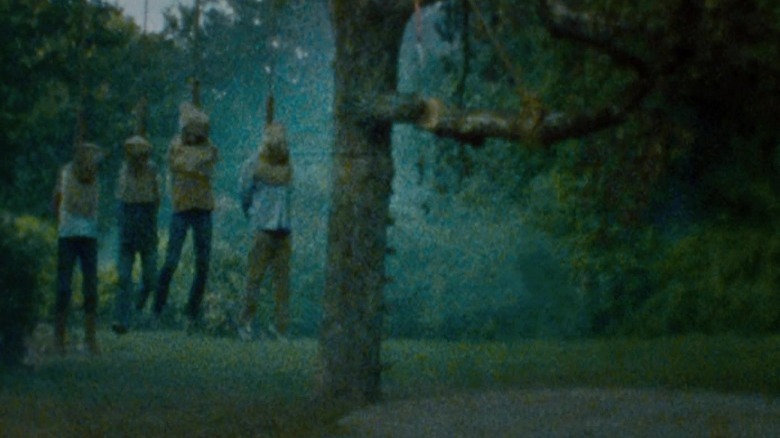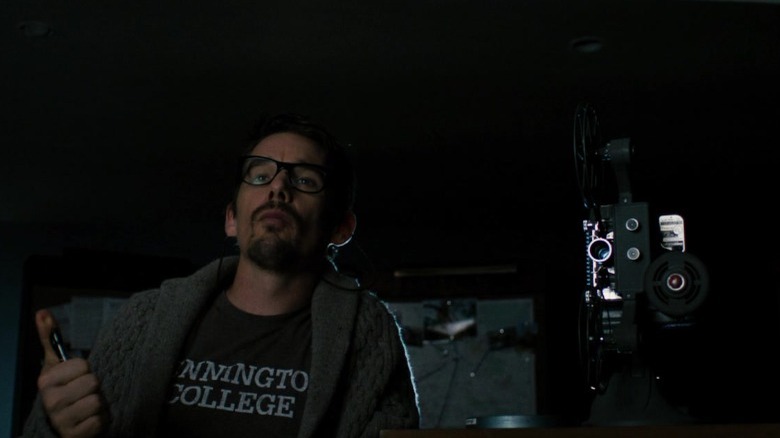The Legendary Artist Whose Work Inspired Sinister's Visual Style [Exclusive]
There's a texture to the scares of "Sinister" that makes its imagery cling to my nightmares much longer than most other horror movies. Its like the movie's Super 8 scares and freaky shot setups are dipped in something dark and inescapable that makes them stick, even a full decade after the film's release. Something like pitch-black paint.
In celebration of the indelible horror movie's 10th anniversary, /Film's Ryan Scott spoke with cast and crew members to create an oral history of "Sinister." Among those interviewed were director of photography Chris Norr and production designer David Brisbin, who opened up about the real black paint involved in production, and the Baroque painter who inspired the film's bone-chillingly dark art design.
"One of the things that [director Scott Derrickson] said," Brisbin shared, was "'Look, we're getting no money to make this, so we can make it look like whatever we want it to look like. This time, our goal is the really intense, emotional scares." The designer explained that Derrickson had an ambitious goal in mind for the film's color scheme, paraphrasing him as saying, "'When we want things to be dark, they're going to be the darkest things that have ever been seen in cinema.'"
A Baroque influence
Brisbin says that the paintings of Michelangelo Merisi da Caravaggio, the 16th century Roman artist whose works pioneered the Baroque movement, was a huge influence on the film's production. "Many, many production designers and directors look back at the paintings of Caravaggio, where there's this black, black, black, black, black in all of the shadows," he says. "But you are not really allowed to do that very often in movies because they're afraid that the blackness won't work on television and reshowing or whatever."
Indeed, Caravaggio's works are known for turning the darkest shades into versatile tools, using black to create images that leave strong and often primally frightening impressions. In paintings like "The Sacrifice of Isaac" and "David With the Head of Goliath," the artist painted biblical scenes, but made them look grotesque and beautifully dreadful by pouring black on the canvas and highlighting the chaos and visceral nature of each subject. Apparently, the crew of "Sinister" decided to go for the chiaroscuro look despite the risk of future TV replay issues, throwing Caravaggio black all over the place.
'I could paint as dark as I wanted'
Cinematographer Norr explained that darkness can often look artificial on digital film, so the team had to use everything they could to make the set itself appear void of light. "Because the digital cameras are very sensitive, it was a lot of work on set," he shared. "So there were times where I was putting black on the ceiling, putting black everywhere so there's no light going into certain parts of the room."
"I could paint as dark as I wanted. Chris Norr could light as dark as he wanted," Brisbin says. "That became one of our standard tools for, how do you make the audience feel something that is just a bit over the edge?" The effect was as unnerving as intended, and a good portion of the scares "Sinister" provided came from the hair-raising impact of any sense of motion or presence within the dark landscape of the Oswalt family home — and on the haunted Super 8 videos that Ellison (Ethan Hawke) discovers.
Although the crew cites Caravaggio as an influence purely in terms of lighting design, there's more than a little of the artist's vision in the traumatizing, freaky home videos at the movie's center, as well. Both the Super 8 snuff films and paintings like "Judith Beheading Holofernes" invoke an unnameable yet full-body sense of dread: not only does "Sinister" use darkness to its advantage, but it clearly understands darkness, too.


